Technological advances boost BAS performance
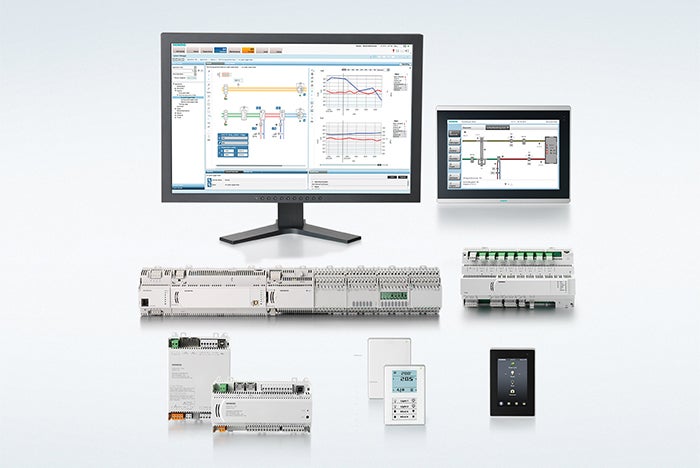
Building automation systems (BASs) in hospitals and health care systems are evolving to the point where truly smart buildings are on the horizon, say vendors who serve the health care facilities field.
Artificial intelligence, machine learning and a connection to the “internet of things” comprise the newest features.
Still, health care facilities pose many challenges to BAS manufacturers, including scalability. Having a solution that can work for a large hospital and an off-site treatment center is important, according to vendors.
Improving operations
“BASs that provide insight into energy use, asset performance and security systems, and effective use of spaces are needed to improve operations and save money across buildings of all sizes,” says Terrill Laughton, vice president of energy optimization and connected equipment at Johnson Controls, Milwaukee.
A growing issue for BASs is secure access to these systems and protection of data as cybersecurity is becoming increasingly important. Keeping these building-related systems isolated from other hospital systems and HIPAA-protected data is essential.
Another major issue is infectious disease control and containment, which includes the control of surgery suites and the ability to maintain tight temperature and humidity requirements.
“Surgery suites and patient isolation rooms have specific pressurization requirements to contain infectious diseases,” says Kenneth Gilbert, regional technical consultant for Automated Logic Corp., Kennesaw, Ga. “It is important that BAS providers understand these needs and offer equipment to help hospitals control these environments.”
How safety and comfort impact the patient experience is another consideration. BASs play a critical role in ensuring that key environmental parameters in patient rooms are operating appropriately, according to Dino Coliano, health care business development manager at Siemens Smart Infrastructure USA, Buffalo Grove, Ill. Equally important is giving patients control over their room environments. “These BAS integrations are becoming even more important to improving the patient experience and patient satisfaction scores,” Coliano says.
What are the big challenges for BASs in small, off-site health care facilities? The No. 1 issue is the cost of an installed system, according to Warren Rosebraugh, senior solution architect for health care buildings at Schneider Electric, Andover, Mass. This is one area within health care where wireless technology and open protocols are important.
“By using devices such as internet of things-enabled thermostats and sensors that utilize Bluetooth or Zigbee, the installation price is reduced and return on investment in less than 24 months is possible,” Rosebraugh says. “Add a gateway to the local site, and through BACnet you can bring these devices back to a central database in the cloud or main campus and have an enterprise control and management system.”
Many off-site facilities are repurposed buildings that were not originally built for the demands of providing an environment of care. “Rooms often are used for multiple purposes and building controls are not designed to provide an environment that can quickly adapt to changing needs,” says Kevin Clinger, marketing director of Alerton, Atlanta. “Thus, contemporary BASs are needed to ensure optimal efficiency, safety and comfort.”
Expanding capabilities
BASs are rapidly evolving, particularly in critical-care spaces. Innovation has centered on the inclusion of machine learning and artificial intelligence used to monitor and optimize systems.
BASs have become more flexible and collaborative, utilizing open-standard industry protocols and leveraging data analytics through cloud-based services. “These technologies allow facility managers to gain more insight into all their systems through customer-tailored reporting and interfaces that are easier to use and can be accessed via mobile devices,” says Jim Beam, controls sales leader North America at Trane, Davidson, N.C.
By investing in new equipment that provides memory and processing power, it is possible to capture enough data for new forms of analytics as well as applications developed for today’s bring-your-own-device world.
“This could take several forms, such as generating automated reports for the maintenance team alerting them to issues causing energy waste or impacting patient comfort,” Rosebraugh says. “Another advance in control systems is supporting open protocol for electronic medical records. This allows integration with admission, discharge and transfer systems as well as patient scheduling to track room occupancy.”
Best practices for BASs include open architecture in design with non-proprietary, BACnet protocols, which allow more applications to be integrated with BAS across the hospital and health system, says Coliano. “As we digitalize the building data, we are actually laying the building blocks for creating smart hospitals, which allows for building performance data to be acquired and actionable information to be created.”
Data collection is, in fact, one of the most important requirements of a BAS. This data can be used to improve energy efficiency by optimizing equipment and systems operating within the facility. It also can be used to predict potential issues. Data collection for health care facilities is especially important for the documentation of critical environments.
“Data collection for monitoring, trending and archiving key environmental parameters in critical and non-critical spaces is important for select accreditation compliance standards,” Gilbert says. “The built environment should always be monitoring and supporting clinical care processes.”
Data collection also is important for fault detection diagnostics of equipment by designated staff, property managers and third-party partners. Understanding past and current equipment and facility performance, combined with applied logic on how they should be performing, can help drive better performance.
“This also supports a continuous system commissioning mindset that many facility managers are using to drive future maintenance workloads and labor productivity, with actionable information being collected and made available via user interfaces and reports,” Coliano says.
Something new
Many BASs recently introduced to the health care market can be considered a part of the internet of things, incorporating artificial intelligence, machine learning and interconnectivity.
For example, Johnson Controls has introduced Enterprise Management, a platform that utilizes artificial intelligence and machine learning technologies to analyze building data across the enterprise and help facilities identify opportunities to save money and streamline operations.
“It’s an open, scalable management solution for every part of a building or portfolio of buildings,” Laughton says. “The apps within provide capabilities for energy management, space performance, data visualization and utility bill management, as well as asset performance with fault detection and diagnostics, maintenance management and occupant comfort.” Among the most important features for hospitals is the Companion App, which gives individuals control over their environment in areas such as temperature and lighting.
“By increasing control of the environment and, by extension, the comfort of patients and staff, it facilitates a smoother healing process,” Laughton says. “Depending on the circumstances, patients might be feeling extremes of hot or cold, or light sensitivity. With the Companion App, the power is given to patients and staff to do what’s best, alleviate discomfort and focus on healing.”
The Tracer Ensemble Cloud with Intelligent Services from Trane uses artificial intelligence to identify issues and continuously optimize building performance. And its dashboards help facility managers understand what once was complicated and difficult to identify. The system simplifies the daily tasks involved with managing patient and staff comfort, energy use and system optimization across one or multiple buildings.
“The Tracer Ensemble Cloud can make a facility manager’s job easier by alleviating his or her building management software maintenance responsibilities. It allows remote access to building information not only through a desktop or laptop computer, but also through a tablet or smartphone,” Beam explains.
Schneider Electric has introduced EcoStruxure Building Operation 2.0, the company’s next generation building management system that delivers actionable insights needed to better manage and optimize health care facilities. With an open and secure software integration framework, the system facilitates centralized, real-time control and management of HVAC, fire safety, security and smart patient room control as well as power monitoring, emergency power control and smart grid implementation — visualized through a single pane of glass.
“EcoStruxure Building Operation 2.0 is a collaborative internet of things solution that features a scalable, secure and global architecture to create future-ready smart buildings,” Rosebraugh says.
Automated Logic Corp.’s WebCTRL platform is used as a building automation system for health care. Key features include an intuitive user interface, trending/custom reporting capabilities and multiple dashboards. Also, Automated Logic Corp.’s environmental index allows operators to quickly identify problem areas, and implement on-premise fault detection and diagnostics.
“WebCTRL makes trending and creating custom reports easy for facility managers,” Gilbert says. “This is beneficial for hospitals because providers are required to document how various environments have been controlled to maintain temperature, humidity and room pressure standards. The ability to store multiple years of trends and create custom reports that can be run and emailed on set schedules is important to hospital administrators.”
Alerton has introduced the Patient Safety Solution, a suite of building controls, sensors, and management compliance reporting and communications tools. Serving as its foundation, the Ascent Compass management console provides complete control over building functions. Features include real-time environmental monitoring by which data from the sensor suite is continuously analyzed and presented in real time to facility and clinical teams.
Venturi valves are used to regulate airflow for ideal room conditions that are in accordance with regulatory standards. “Venturi valves provide superior performance over variable air volume boxes, and have been proven to create cleaner environments, potentially reducing the risk of [health care-associated] infections,” Clinger says. “They also allow for increased air change rates.”
Also, an artificial intelligence-assisted patient comfort and satisfaction component features an artificial intelligence chatbot that captures and responds to common patient requests. The chatbot answers questions, summons appropriate staff members and makes changes to room temperature, sound levels and lighting without the need for staff intervention.
Siemens offers the Desigo CC platform, which integrates numerous devices and subsystems into a unified command and control center for health care facilities and campuses. Included in its integration capability are adaptors for gathering data from internet of things devices, with the flexibility to match future devices as they become available.
“With Desigo CC, health care organizations receive the benefit of a system that is open, scalable and secure for their organizations today and in the future,” says Jeff Wills, director for automation portfolio at Siemens Smart Infrastructure USA.
Rapid evolution
Clinger predicts that BAS capabilities will evolve rapidly over the next several years. He says BASs and the data they capture are starting to reach beyond the facilities team and into the clinical world, and that reach will accelerate.
Neal Lorenzi is a freelance writer and regular contributor based in Mundelein, Ill.
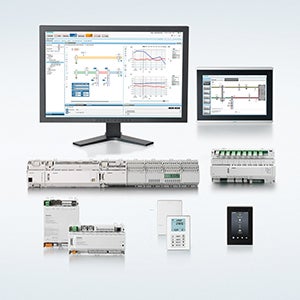
REACHING OUT
The Desigo CC building management system integrates disparate building applications from across a hospital and health system. Siemens Smart Infrastructure USA
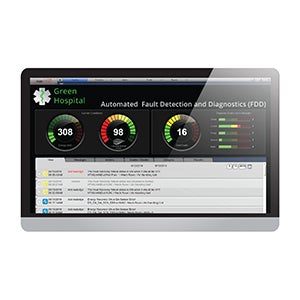
EARLY WARNING
The WebCTRL system’s fault detection and diagnostics can identify and respond to issues before they become critical. Automated Logic Corp.
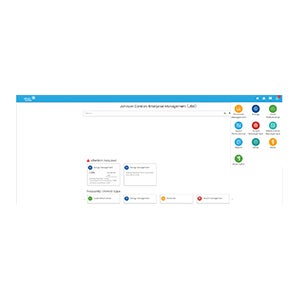
WATCHING IT ALL
From the Enterprise Management dashboard, health care facility managers can monitor the health of their entire building system, from asset performance to energy use to financial health. Johnson Controls

ALL IN ONE
Using an integrated building management system like the Ascent Compass management software can give a facility’s staff the ability to manage all of the building’s systems through one interface. Alerton
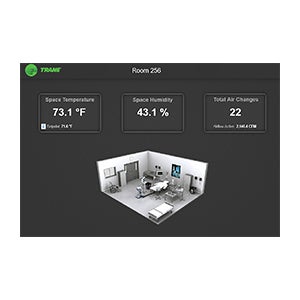
THINK VISUAL
This system allows users to create their own display of current system performance, such as monitoring an operating room at a nurse’s station. Trane
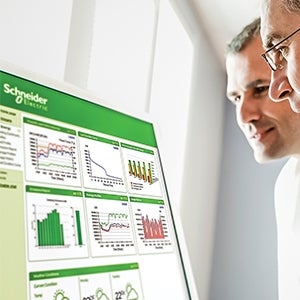
REMOTE CONTROL
Advances in building automation systems enable patients to control their environments from their own devices. Schneider Electric




